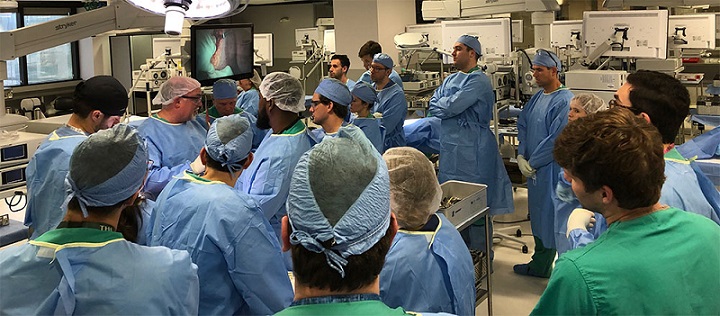Elizabeth Hofheinz, M.P.H., M.Ed.
A team of forward-thinking researchers from The Johns Hopkins University set out to understand how “the perceptions of diversity and inclusion in orthopaedic surgery compare among medical students of different gender identities, races or ethnicities, and sexual orientations” and “how do perceptions change after an orthopaedic clinical rotation among members of demographic groups who are not the majority in orthopaedics (that is, cis-gender women, underrepresented racial minorities, other racial minorities, and nonheterosexual people)?”
Their work, “How Do Medical Students Perceive Diversity in Orthopaedic Surgery, and How Do Their Perceptions Change After an Orthopaedic Clinical Rotation?” appears in the March 2021 edition of Clinical Orthopaedics and Related Research.
“Much of the inspiration for this work came from our own experiences,” said co-author Dawn LaPorte, M.D. Vice Chairman of Education and Professor of Orthopaedic Surgery at Johns Hopkins School of Medicine. “At Hopkins, we make a strong effort to introduce medical students to orthopaedic surgery early on, through a hands-on session during the first-year anatomy lab. This is where Rafa (our lead author) first became exposed to the field and was fortunate since then to work with diverse faculty and residents in our department.”
“Reflecting back, we realized that such dedicated exposure, not only to orthopaedics, but to an orthopaedic department which embraces diversity, may not always occur for students across the country.”
“Orthopaedics is not usually a required clinical rotation. Knowing that much of the drop-off in diversity in orthopaedic surgery occurs between medical school and residency, we saw an orthopaedic clinical rotation as a potential way to encourage more diverse applicants into the field. Specifically, we assessed how students perceived diversity in orthopaedics before and after a dedicated orthopaedic rotation.”
The researchers surveyed medical students from 27 US schools who had completed orthopaedic rotations. They inquired about: demographics, rotation experience, perceptions of diversity and inclusion in orthopaedics, and personal views on specialty choice. “Questions were derived from diversity, equity, and inclusion climate surveys used at major academic institutions,” wrote the authors.
“Cis-gender men and cis-gender women were defined as those who self-identified their gender as men or women, respectively, and were not transgender. Forty-five percent (59 of 131) of respondents were cis-men and 53% (70 of 131) were cis-women; 49% (64 of 131) were white, 20% (26 of 131) were of underrepresented racial minorities, and 31% (41 of 131) were of other races. Eighty-five percent (112 of 131) of respondents were heterosexual and 15% (19 of 131) reported having another sexual orientation.”
Ortho rotation…open sesame?
“We found that medical students of demographic backgrounds that are not the majority in orthopaedics tend to perceive the field as less diverse and inclusive than their counterparts from majority demographic backgrounds. However, following a clinical rotation, many of these negative perceptions were mitigated. While the rotation may serve an important role in encouraging more diverse applicants to orthopaedics, all of this must occur in tandem with many other efforts to diversify and increase inclusivity within the field.”
Dr. LaPorte: “There is a need for greater diversity in orthopaedic surgery. Both the percentages of women as well as underrepresented racial and ethnic minorities are low (lower than any other specialty). It goes without saying that our field should foster an inclusive environment open to individuals of all backgrounds. Additionally, we know that a diverse physician workforce means better care for our patients. Given all this, it is certainly the right time to work on improving these issues and such studies are long overdue. Furthermore, our goals to improve diversity in orthopaedics also fit into the broader national conversations surrounding inclusion and equity over the past year.”
More inclusion will come from ortho rotation being included in the curriculum
“We would love to collect data on medical student perceptions of diversity in orthopaedics in real-time and assess not only the role of a clinical rotation in shaping these views, but also other forms of exposure to the field. (Our study surveyed students post-rotation). Furthermore, we would look forward to seeing work dedicated to understanding and promoting diversity in sexual orientation in orthopaedics.”
“We should encourage early exposure to orthopaedic surgery and, ideally, a mandatory orthopaedic rotation. We want to share the excitement of orthopaedic surgery with students who may not look like us and we want them to see that the field of orthopaedic surgery embraces diversity and is committed to fostering an inclusive environment.”








